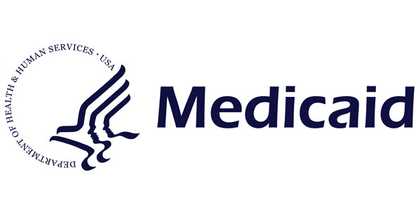Determining how to tell if you need braces is a pivotal step toward achieving a healthy, radiant smile.






Save $250 off braces or Invisalign!*
Schedule your appointment online.
Determining how to tell if you need braces is a pivotal step toward achieving a healthy, radiant smile. Many individuals question how to know if you need braces, but recognizing the telltale signs can offer valuable insight. This guide will help you pinpoint key indicators such as alignment issues, bite irregularities, and aesthetic concerns, guiding you on your orthodontic journey. We’ll also explore self-assessment techniques and the importance of consulting a professional at the right time. Early intervention can significantly impact your treatment’s success, so let’s delve into the benefits and options available to you.
Signs You May Need Braces
If you’re wondering how to tell if you need braces, several common dental issues might serve as indicators. Misaligned teeth or irregular bites, such as overbites, underbites, or crossbites, are primary signs. These conditions can lead to uneven wear and discomfort over time.
Visual cues like overlapping, spaced, or protruding teeth are often the most noticeable. If you observe these, it might be time to consult an orthodontist. Such issues not only affect your smile’s aesthetics but also impact your dental health.
Functional challenges can also indicate the need for braces. Difficulty in chewing or discomfort while speaking may suggest improper teeth alignment. Addressing these issues early can enhance your oral health and overall quality of life. Understanding how can you tell if you need braces is crucial for taking timely action.
Self-Assessment: Do You Need Braces?
To determine how to know if you need braces, start with a simple self-assessment of your dental health. Ask yourself if you experience discomfort when biting or chewing, notice crowding or gaps, or see misalignment. Do you frequently bite your tongue or cheeks? These questions can indicate whether braces might benefit you.
Evaluate your bite and teeth alignment using a mirror. When your teeth meet, do they fit neatly or overlap? A normal bite should allow upper teeth to slightly overlap lower teeth without excessive spacing or crowding. Irregularities could signal that braces are necessary.
Consider signs of needing braces in both children and adults. In children, early indicators include thumb sucking, prolonged pacifier use, or delayed tooth loss. For adults, persistent jaw pain, difficulty chewing, or noticeable bite changes over time may be signs. Recognizing these early can prevent complex issues and ensure optimal dental health.
When to Seek Professional Help
Consulting an orthodontist at the right time can significantly influence your dental health. The American Association of Orthodontists suggests children have their first orthodontic evaluation by age 7. At this age, an orthodontist can assess jaw development and incoming teeth, identifying potential issues early on. Early detection allows for timely intervention, potentially avoiding more extensive treatment later.
After the initial evaluation, regular check-ups are crucial. Visiting the orthodontist every 6 to 12 months helps monitor dental development and address emerging issues promptly. Consistent visits also allow for necessary adjustments if treatment is already underway.
Indicators that it might be time to consult an orthodontist include overcrowded teeth, difficulty biting or chewing, and jaw misalignment. Additionally, if your child or teenager experiences self-esteem issues related to their smile, seeking professional help can provide functional and aesthetic solutions. Early, proactive care paves the way for a healthier, more confident smile.
The Benefits of Early Intervention
Obtaining braces at a young age offers numerous advantages for enhancing dental health. Children’s developing jaws and teeth make correcting misalignments easier, often leading to shorter treatment times and less invasive procedures than those required in adulthood.
Early intervention can yield long-term benefits. Correcting issues like overcrowding or bite problems while they are manageable helps avoid severe complications later, such as tooth decay, gum disease, and jaw problems. This approach improves the aesthetic appearance of the smile and promotes overall oral health.
Furthermore, early treatment reduces the likelihood of future complications. Children who receive braces early are less likely to need extensive orthodontic work in their teenage years or adulthood, resulting in fewer orthodontist visits and a more streamlined dental health maintenance process. Investing in early braces sets the foundation for a healthier, more confident smile that lasts a lifetime.
Understanding Your Treatment Options
When considering orthodontic treatment, understanding the available types of braces is essential. Traditional metal braces, consisting of brackets and wires, gradually shift teeth into the desired position. They effectively address a wide range of dental issues and suit patients of all ages.
Clear aligners offer a more discreet alternative. These custom-made, removable trays are nearly invisible, appealing to adults and teens seeking a less noticeable option. Clear aligners are designed for minor to moderate orthodontic issues, making them an excellent alternative for many patients.
When deciding between clear aligners and traditional braces, consider factors like the severity of your dental issues, lifestyle, and commitment to wearing aligners for 20 to 22 hours daily. Complex cases may require traditional braces, while clear aligners suit those prioritizing aesthetics or who engage in sports. Discussing specific needs and preferences with your orthodontist will guide you in choosing the right treatment for a beautiful, healthy smile.





